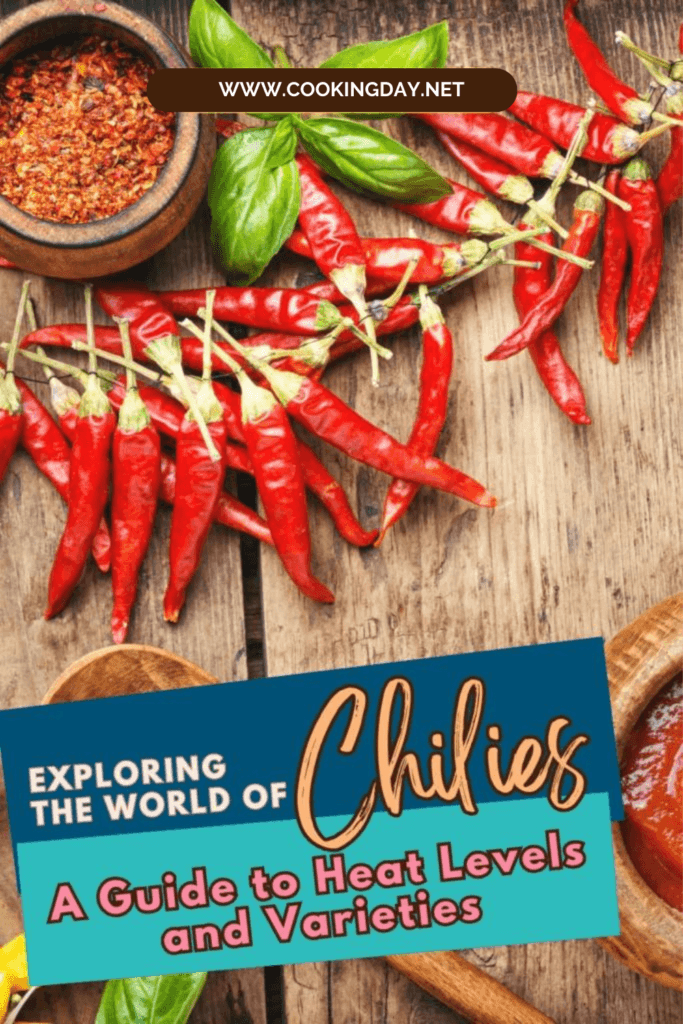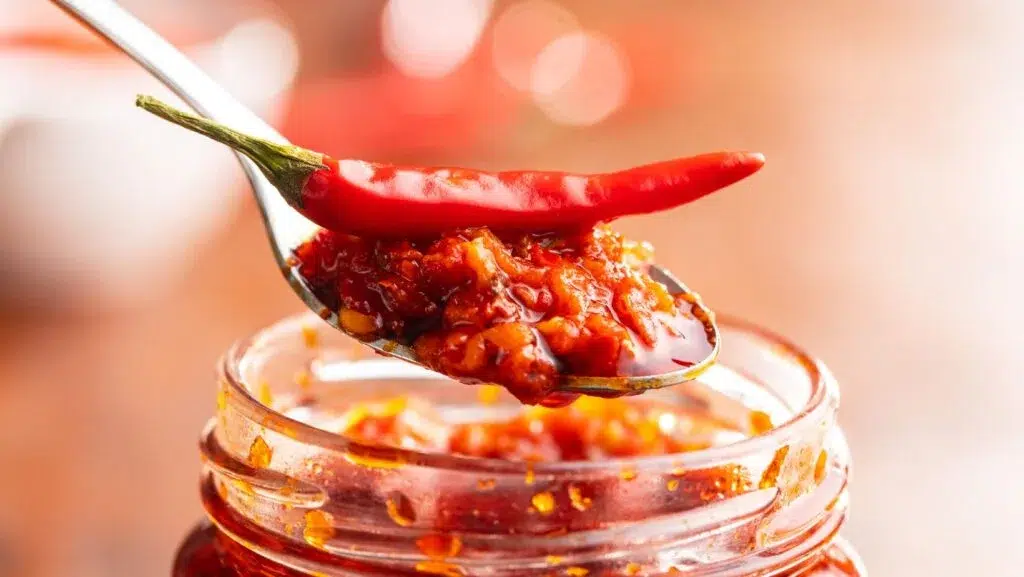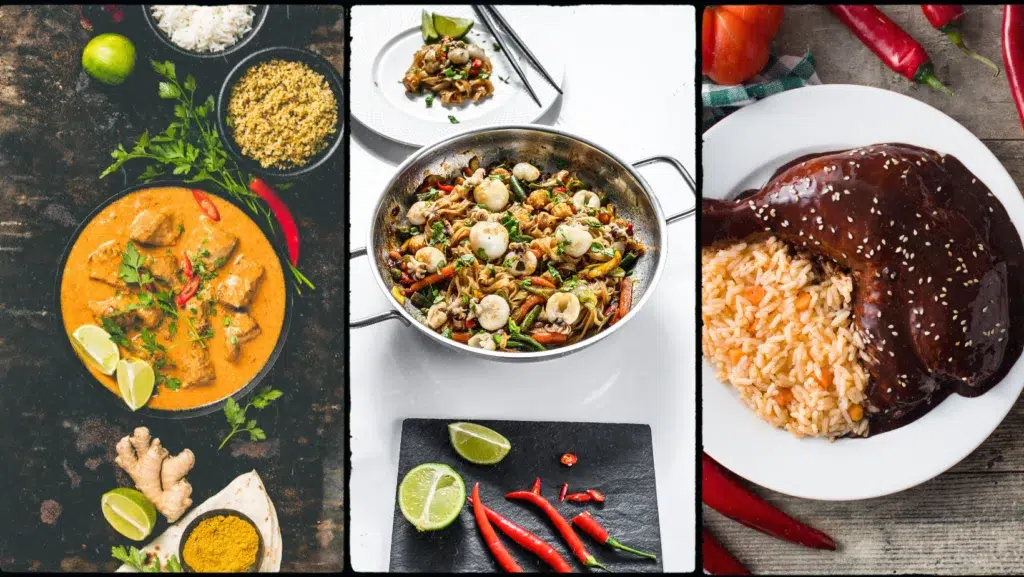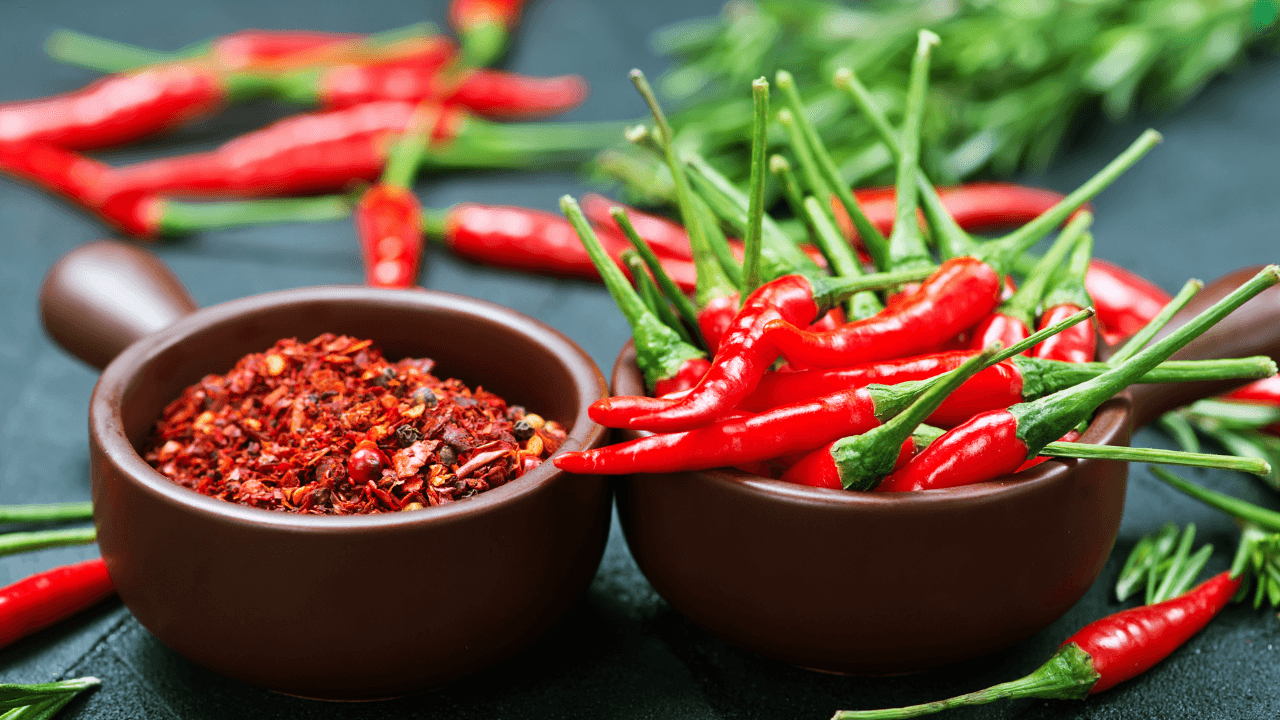Some links on this page are affiliate links. This means we may earn a commission at no additional cost to you if you click through and make a purchase, you can check our Affiliate Disclosure. Thank you for your support!
Hey there, spice lovers! 🌶️ Are you ready to explore the amazing world of chilies? Chilies are not just ingredients but tiny powerhouses of flavor and heat that can make or break a dish. Each type of chili has a unique personality, from the mild bell pepper to the tongue-tingling ghost pepper.
But why should we care about the different types of chilies? Well, it’s simple. Knowing your chilies means you can control the heat and flavor in your cooking, turning every meal into a masterpiece. Whether spicing up a salsa or cooling down a curry, understanding chilies is a game-changer in the kitchen.
So, let’s start this spicy journey and discover how the world of chilies can heat your cooking skills! 🔥

The Science of Chili Heat
Ever wonder what makes chilies hot? It’s all thanks to a little thing called capsaicin. Capsaicin is the magic behind the burn you feel when biting a chili pepper. It’s not just about heat; capsaicin also brings out the unique flavors in different chilies.
To measure how hot a chili is, we use something called the Scoville Scale. It’s like a thermometer for spice! The scale counts in Scoville Heat Units (SHU); higher numbers mean hotter chilies. For example, a sweet bell pepper scores a cool zero on the scale, but a fiery habanero can blaze up to 350,000 SHU! 🌡️🔥
Types of Chilies and Their Heat Levels

Now, let’s meet some popular chilies and their heat levels:
Bell Peppers: The chill-out chili. They score zero SHU, making them perfect for adding crunch without the punch.
Jalapeños: These green guys are a bit of a wildcard, ranging from 2,500 to 8,000 SHU. They’re great for a mild kick in salsas and tacos.
Habaneros: Enter the heat zone! With 100,000 to 350,000 SHU, habaneros are super hot and perfect for those who love a spicy challenge.
How to Choose the Right Chili for Your Dish
Picking the right chili for your dish is like choosing the perfect accessory for your outfit – it should complement, not overpower. Here are some tips to help you make the best choice:
Know Your Heat Tolerance: Start with milder chilies if you do not like intense heat.
Consider the Cuisine: Use chilies that match the flavor profile of your cuisine. For instance, jalapeños are great in Mexican dishes, while Thai cuisine often calls for bird’s eye chilies.
Experiment with Flavors: Each chili has a unique flavor, so feel free to experiment and find what you love!
ALSO READ:
Gauging and Adjusting Heat Levels in Cooking
Have you ever taken a bite of your dish only to find it’s too spicy or not spicy enough? Don’t worry, getting the heat level right can be a bit of a balancing act, but with a few tricks, you’ll be on your way to perfecting it. 🌶️
Taste Test: Before adding chilies to your dish, taste a tiny piece (if you dare!). it gives you a sense of how fiery they are.
Remove Seeds and Membranes: Since most of the heat is concentrated inside the seeds and white membranes of the chilies, remove them if you wish to reduce the heat.
Roasting: Roasting it can mellow their heat and add a smoky flavor. Just pop them in the oven or on a dry skillet until they’re slightly charred.
Add in Stages: Start with a little, taste, and add more if needed. It’s easier to increase heat than to decrease it.
ALSO READ: Elevate Your Meals: A Power-Packed Guide to Seasonal Ingredients
Balancing Flavors and Heat in Recipes
Making a dish that’s both spicy and flavorful is all about balance. Here are some tips to keep in mind:
Mix with Sweet and Sour Elements: Adding sweet (like sugar or honey) or sour (like lime or vinegar) ingredients can balance the heat.
Dairy to the Rescue: Dairy products like yogurt, milk, or sour cream can cool down a dish. They’re great in curries and spicy soups.
Complementary Ingredients: For bell peppers, try tomatoes and onions. With jalapeños, cilantro and lime work wonders. For habaneros, tropical fruits like mango or pineapple are great pairs.
Handling and Safety Tips for Cooking with Chilies
Chilies are great in your food, but not so much on your skin or eyes. Here’s how to handle them safely:
Wear Gloves: This is a must, especially for hotter chilies. It prevents the capsaicin from burning your skin.
Don’t Touch Your Face: Especially your eyes. If you do, rinse with water immediately.
First Aid for Chili Burn: If you get a chili burn, don’t panic. Soak the area in milk or yogurt, or apply a cold compress.
Innovative Ways to Use Different Types of Chili in Cooking
Chilies aren’t just about adding heat; they’re a doorway to a world of flavors and culinary adventures. Let’s explore creative ways to incorporate these versatile gems into your meals, showcasing their unique flavors in various dishes. 🌶️👩🍳

Make a Chili Oil: Infuse olive or sesame oil with dried chilies for a spicy kick. Drizzle it over pizzas, pastas, or soups for an instant flavor boost.
Spice Up Your Desserts: Yes, you read that right! Add a pinch of chili powder to chocolate cakes or brownies for a surprising twist.
Homemade Chili Sauces: Blend fresh or dried chilies with garlic, vinegar, and spices to create your hot sauce. Each type of chili offers a different flavor profile.
Highlighting the Versatility of Global Cuisines:

Mexican Mole: Incorporate it like ancho or chipotle into a rich mole sauce. It’s a beautiful blend of chocolate, spices, and chilies.
Asian Stir-fries: Use Thai bird’s eye chilies to bring the heat to your stir-fries. They pair wonderfully with garlic, ginger, and soy sauce.
Indian Curries: Green chilies are a staple in Indian cooking. Add them to curries for both heat and a burst of fresh flavor.
Remember, thinking beyond the heat is the key to using chili in cooking. Every variety has a distinct flavor and has the power to elevate a basic dish to extraordinary heights. So, go ahead and experiment with different chilies and discover the rich flavors they can add to your cooking!
ALSO READ: Understanding Different Types of Salt: A Comprehensive Guide
Conclusion
What a spicy journey we’ve had! 🌶️ Remember, chilies are more than just a source of heat; they’re flavor boosters, mood enhancers, and the soul of many dishes across various cuisines. Understanding and utilizing the diverse types can elevate your cooking game, adding depth and character to your dishes.
I encourage you to experiment with different chilies and observe their heat levels. Whether you’re spicing up a family recipe or trying something new in the kitchen, it can add that perfect kick or subtle warmth you’re looking for. Venture beyond your comfort zone and savor the diverse flavors these fiery companions offer without fear. 🔥
FAQs about Chilies
Q: Can I substitute one type of chili for another?
A: Yes, but remember that it has different heat levels and flavors. It’s all about finding a balance that works for your taste buds.
Q: How do I reduce the heat if my dish gets too spicy?
A: Dairy products like milk, yogurt, or sour cream can help tame the heat. Adding more base ingredients like broth, vegetables, or grains can dilute the spiciness.
Q: Are dried chilies less spicy than fresh ones?
A: Not necessarily. Drying concentrates the flavors and can sometimes intensify the heat. Always taste a small piece to gauge the heat level.
Happy cooking, and may your culinary adventures with chilies be delicious and exciting! 🌶️👩🍳

